Starting a Spanish immersion program at International Montessori can be an exciting opportunity for children who are new to the language, though it may feel daunting at first. At our Spanish immersion school, we understand the challenges that come with this transition and are committed to providing a nurturing environment where children can thrive.
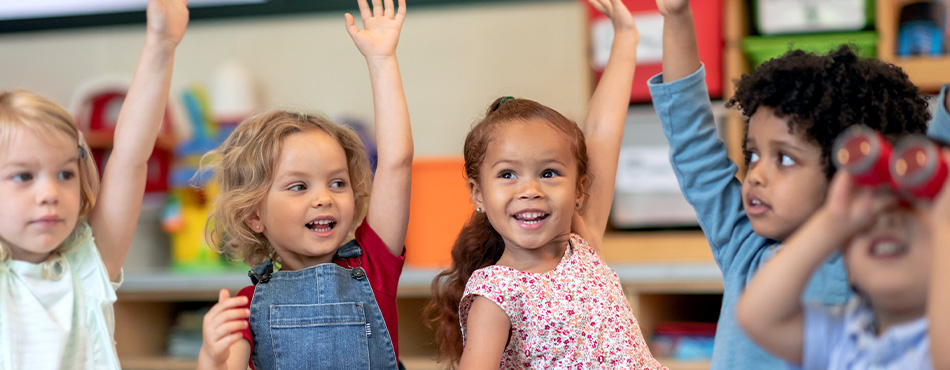
1. Creating a Supportive Environment for Language Immersion
At International Montessori, our Spanish immersion programs are thoughtfully designed to meet the needs of beginners. From preschool to kindergartner school, we utilize the Montessori approach to ensure that children feel supported, engaged, and confident as they embark on their journey of learning Spanish. By combining language immersion techniques with early childhood education principles, International Montessori ensures the process is seamless and natural for every child.
One key strategy at International Montessori is starting with bilingual education. Teachers introduce new words and phrases by saying them first in English and then in Spanish. For example, a teacher might say, “This is a pencil” in English and then follow with “Este es un lápiz” in Spanish. This method helps children make connections between the two languages without feeling overwhelmed. It’s a gentle introduction that allows them to begin understanding Spanish while still relying on their native language as a foundation.
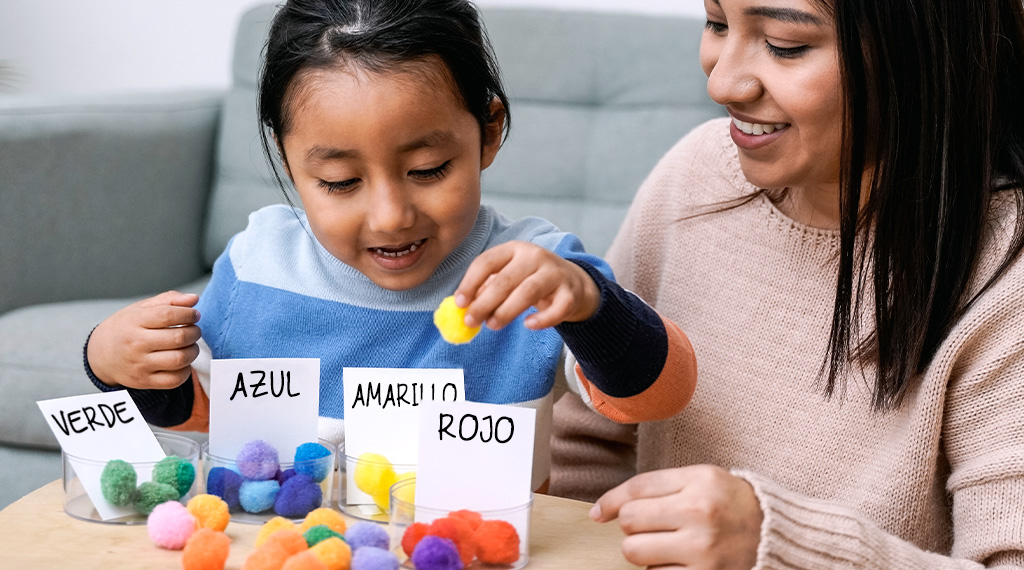
2. Gradually Phasing Out English
As children become more comfortable and confident in their Spanish immersion preschool or kindergartner school setting, we gradually phase out the use of English. The goal is to create an environment where Spanish becomes the primary language of communication. This dual language learning process is carefully monitored to ensure that each child’s comfort and progress are prioritized.
By closely observing the children, our teachers assess when they are ready to engage exclusively in Spanish for certain interactions. For example, when a child consistently understands a Spanish phrase, we gently phase out English support. This gradual and supportive transition allows children to build confidence and proficiency in their second language in a natural and stress-free way.
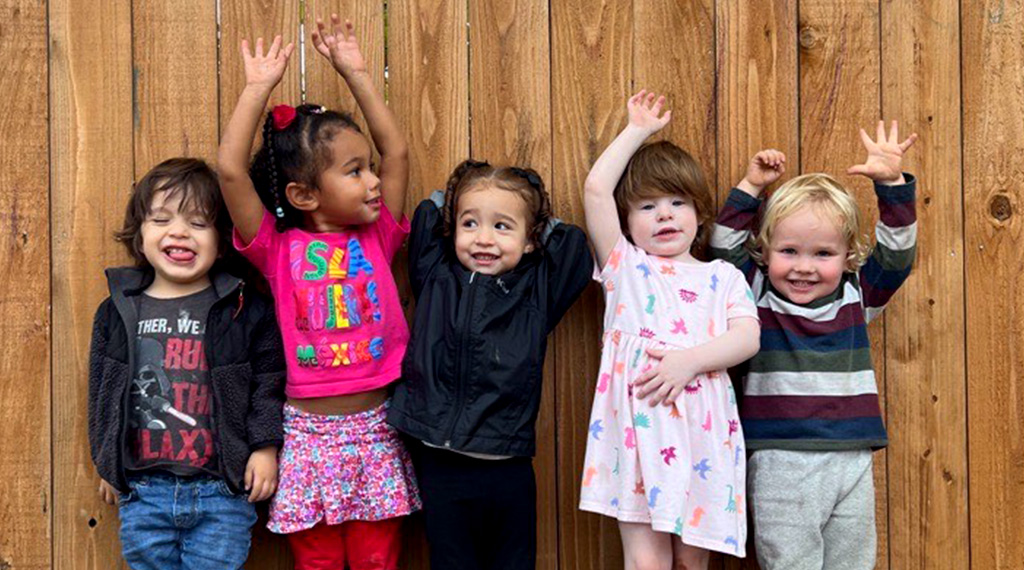
3. Emphasizing Cultural Awareness
Language immersion at International Montessori is about more than just learning vocabulary and grammar; it also fosters cultural awareness. Our Spanish immersion Montessori programs incorporate activities and lessons that expose children to the rich and diverse cultures of Spanish-speaking countries. This holistic approach not only enhances their language skills but also fosters a deeper appreciation for the world around them.
From celebrating cultural traditions to incorporating authentic music, art, and stories into the curriculum, we strive to make learning Spanish an engaging and enriching experience. By connecting language learning with cultural exploration, we help children develop a strong foundation for understanding and embracing diversity.
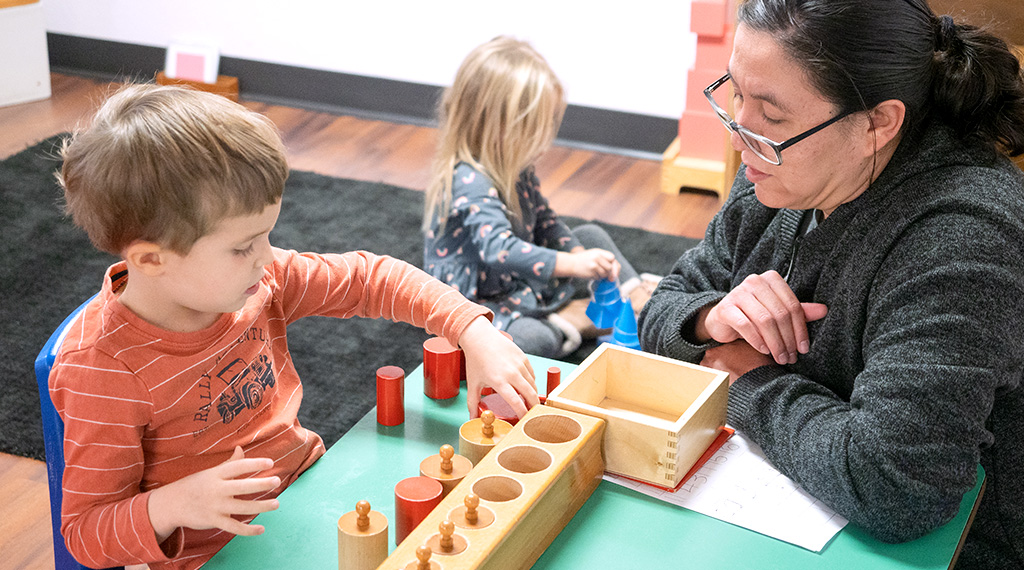
4. Leveraging the Montessori Approach
The Montessori philosophy is at the heart of our Spanish immersion programs at International Montessori, fostering a personalized and child-centered learning experience. By emphasizing individualized learning and hands-on exploration, we create an environment where children can absorb the Spanish language naturally and at their own pace. This approach is especially beneficial for those with no prior exposure to Spanish, allowing them to build confidence and fluency gradually.
In a Montessori classroom, children learn through exploration, discovery, and purposeful activities. For example, they may sort objects by color or shape while simultaneously learning their Spanish names, seamlessly integrating language acquisition into everyday experiences. This multisensory and immersive approach makes language learning engaging, meaningful, and joyful, ensuring that children remain motivated and excited about their progress.
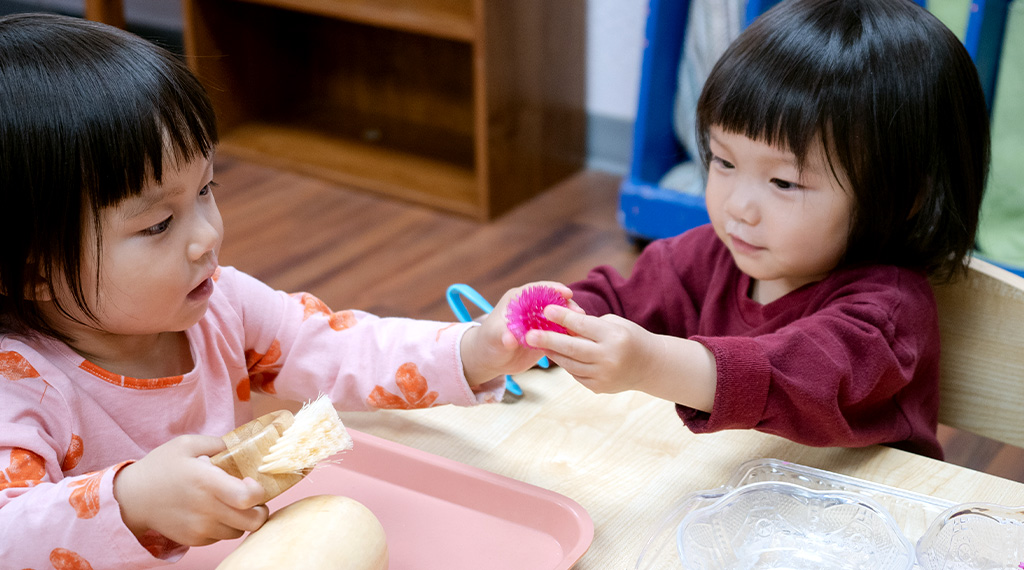
5. Supporting Second Language Acquisition
Second language acquisition is a fascinating and natural process, especially for young learners between birth and six years old. This stage, known as the sensitive period, is when children’s brains are especially receptive to language learning, making it the ideal time to introduce a new language.
To support this process, we create a language-rich environment where Spanish is seamlessly integrated into the child’s daily routine. From morning circle time to snack breaks and outdoor play, children are continuously exposed to Spanish in meaningful and engaging ways.
Repetition and consistency play a crucial role in language development. By regularly hearing and using Spanish, children begin to internalize its rhythm and structure naturally. Our teachers also incorporate visual aids, gestures, and props to reinforce meaning, making it easier for children to understand and retain new words and phrases. These strategies help create a joyful and immersive learning experience, allowing children to develop Spanish language skills with confidence and ease.
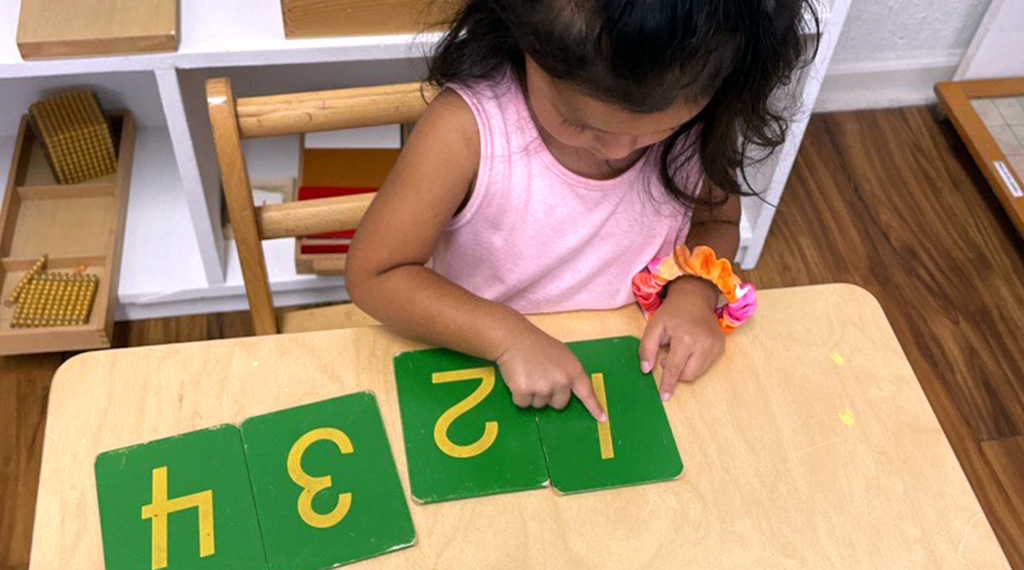
6. Building Confidence Through Positive Reinforcement
Building confidence is essential for successful language immersion. At our Spanish immersion school, we use positive reinforcement to celebrate each child’s progress and achievements. Whether it’s correctly identifying a color in Spanish or forming a simple sentence, every milestone is acknowledged and celebrated.
Children are encouraged to explore and engage with the language at their own pace, fostering a sense of accomplishment and intrinsic motivation. Whether they are identifying colors in Spanish or forming their first simple sentences, each milestone is recognized, empowering them to develop language skills with confidence and joy.
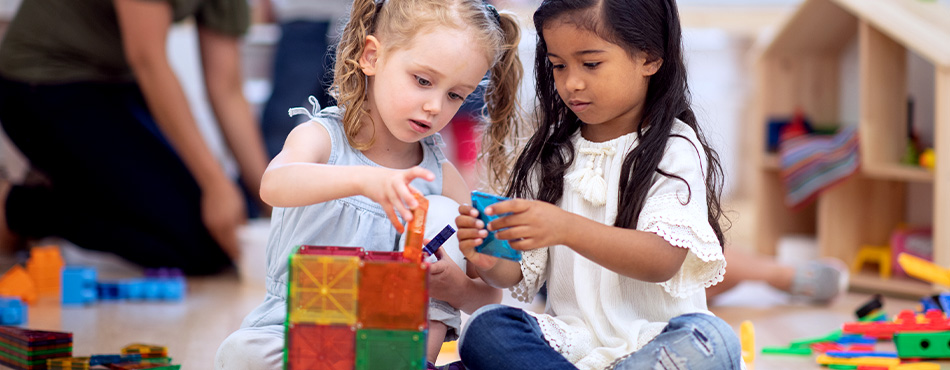
7. Making Spanish Immersion Fun and Engaging
One of the most important aspects of our Spanish immersion school is ensuring that learning is fun and engaging. Children are naturally curious and eager to explore new experiences, and we harness this enthusiasm to make language learning an enjoyable adventure.
Through songs, games, stories, and creative activities, International Montessori brings the Spanish language to life in ways that captivate children’s imaginations. For example, a teacher might lead a group in singing a traditional Spanish song, complete with hand motions and dance moves. These interactive experiences not only reinforce language skills but also create lasting memories that children carry with them long after they leave the classroom.
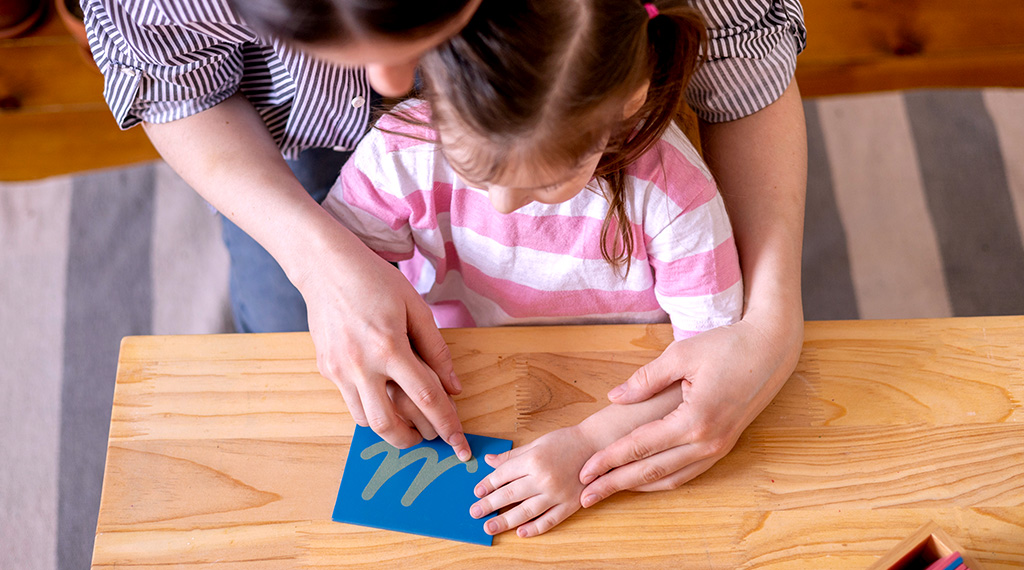
8. Monitoring Progress and Adjusting Strategies
Every child learns at their own pace, and we are committed to meeting each child where they are. By closely monitoring progress and adjusting our teaching strategies as needed, we ensure that every child feels supported and successful in their language-learning journey.
For children who may need extra help, we provide additional resources and one-on-one support. Whether it’s practicing basic vocabulary or working on pronunciation, our teachers are always available to offer guidance and encouragement. This individualized attention helps children overcome challenges and achieve their full potential.
The Long-Term Benefits of Spanish Immersion
The benefits of enrolling in a Spanish immersion program extend far beyond language skills. Studies have shown that bilingual education enhances cognitive development, improves problem-solving abilities, and boosts academic performance. Additionally, children who participate in language immersion programs often develop greater cultural awareness and empathy, which are invaluable skills in today’s global society.
Furthermore, learning a second language strengthens memory, increases mental flexibility, and enhances multitasking skills. Bilingual individuals also tend to have stronger communication abilities and adaptability, which can benefit them in both academic and professional settings. Early exposure to a second language has even been linked to long-term brain health, potentially delaying the onset of cognitive decline later in life. Ultimately, bilingualism opens doors to new opportunities, broadening children’s perspectives and preparing them for success in an interconnected world.
By enrolling in a Spanish immersion preschool or kindergarten school at International Montessori, children gain a valuable head start on becoming bilingual and bicultural. These skills not only open doors to future opportunities but also lay the foundation for a lifelong love of learning and exploration.
Conclusion
Supporting children who have no prior exposure to Spanish requires a nurturing approach. At our Spanish immersion school, we are committed to ensuring that every child feels welcomed, supported, and excited about their language-learning journey.
Through a combination of bilingual education, the Montessori method, and a deep emphasis on cultural awareness, we create an environment where children can grow with confidence. Our goal is to make this experience both enriching and enjoyable, allowing each child to develop not only academically but also personally, as they build connections and embrace new perspectives in a warm and inclusive community.
If you’re interested in learning more about our programs, we invite you to visit our Spanish immersion program page. You can also explore our locations and learn more about International Montessori’s mission. Here, you’ll find detailed information about our curriculum, teaching methods, and the many benefits of enrolling your child in a Spanish immersion program. We look forward to supporting your child as they embark on this exciting new adventure!


